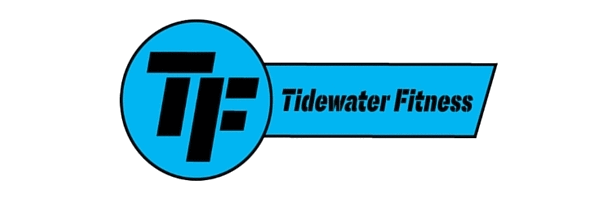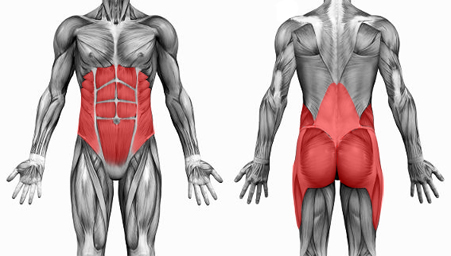The term “core” has become a buzz word over the last few years. With all the infomercials and exercise equipment out there, it has lead many to believe core training will suddenly help them drop a few clothing sizes.
Unfortunately this isn’t the case. The only way to truly get leaner is by combining a sound training program with consistently eating well. However, that doesn’t mean core exercises are useless.
The opposite is true. Your core has many jobs. One of the most important being a stabilizing anchor for the whole body. By that I mean, it must be able to resist movement in the presence of change.
For example, when you squat your core must be able to remain rigid and stiff as you move. If it doesn’t, technique is compromised which could lead to injury. Another example, and one most people don’t think about, are the day-to-day tasks of life. Moving furniture, carrying groceries, and picking things up off the floor all require a strong core to do properly and pain free.
This is why core exercises are important and why they should be done in your workouts.
However, traditional ab exercises include things like sit ups, crunches, Russian twists, and the like. I have talked in length about how to properly train your abs, so I won’t dive too deeply into why you shouldn’t be doing these types of exercises.
Instead, I want to introduce you to 3 unconventional core exercises I been using with my clients over the past few months with great results. These exercises focus on spinal stabilization and core endurance, while maintaining a neutral spine position, versus spinal flexion (bending the spine forward) as with traditional exercises. Training the core in this manner will provide the largest bang for your buck when it comes to low back health.
1. Tall Kneeling Band Plank
How to do it:
Take a kneeling position with both knees on a pad or mat. Squeeze your glutes and your abs. Then, using a band attached overhead, pull straight down. The arms should be straight and parallel to the floor. Hold for 8-10 breaths.
The Tall Kneeling Band Plank is a great introductory exercise that teaches you how to properly brace or contract your abs. This is important because it transfers over quite nicely to other big exercises like the squat and deadlift that require a braced core to perform safely.
This is where most people go wrong with ab training. They believe training the abs and training the body are two separate things. But like I mentioned above, the core is the anchor of the body and the exercises you do for your abs should help you perform other exercises safely and effectively.
2. Stability Ball Plank Rollout
How to do it:
Set up in a plank position on a stability ball. From here, squeeze your glutes and abs to create a strong rigid core position. Then, roll the ball away from you and pull it back to you. Do not let the hips sag here, as this will stress the low back. Perform 8-10 repetitions.
The Stability Ball Plank Rollout focuses on anterior core control. That’s a fancy way of saying it helps to strengthen your abdominal muscles and resist extension or overarching through the low back.
An extension-based position can contribute to a cranky and tight low back. Training your abs to fight against this will go a long way toward maintaining better posture and reducing injury risk.
3. Stir The Pot
How to do it:
Again, set up in a plank on a stability ball. With the glutes squeezed and abs braced, begin by rotating your arms in a circle. Do this for 6-8 repetitions per side. Be sure to not let the hips sag in this exercise either.
Stir The Pot is an exercise I picked up from Dr. Stuart McGill, a spinal researcher in Canada. Again, it focuses on anterior core control but the exercise is more dynamic in nature.
With the rollout from above, the movement was forward and backward. In Stir The Pot, you are rotating the arms in a circular pattern. This provides a rotation challenge as well.
Our bodies move in three planes of motion: Sagittal (front to back), Frontal (side to side), and Transverse (rotational). Performing exercises in each of these categories ensures we are training our abdominals to remain stable no matter what plane we move in.
*****
There you have it! Three new unconventional core exercises you can try in your own training programs.
Remember, one of the main functions of the core is stabilization. The exercises from above can enhance your ability to create and maintain stability. This will help you train harder, become more resilient to injury, and get great results in and out of the gym.
Photo Credit:
1. www.tao-wellness.com
Social Media:
1. www.facebook.com/tidewaterfitness
2. www.twitter.com/tidewaterfit
3. www.instagram.com/tidewaterfitness






